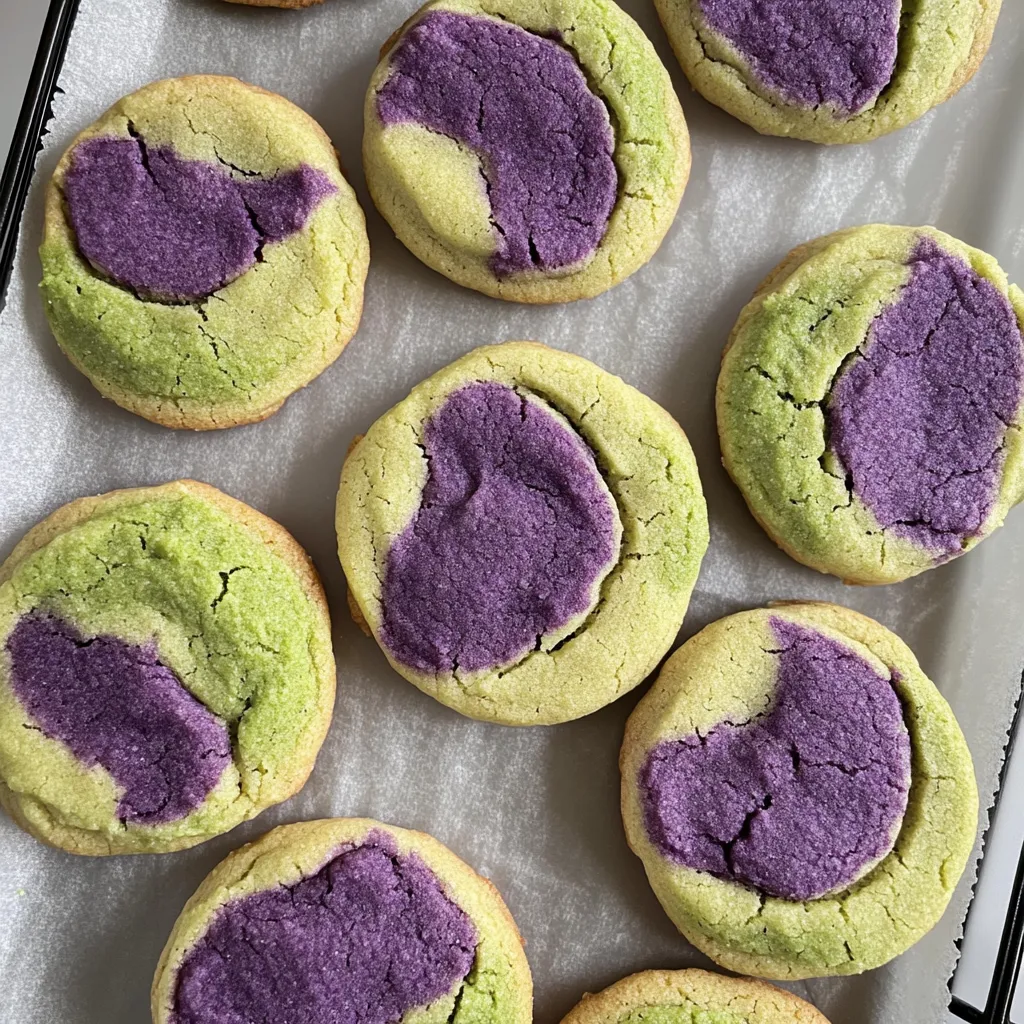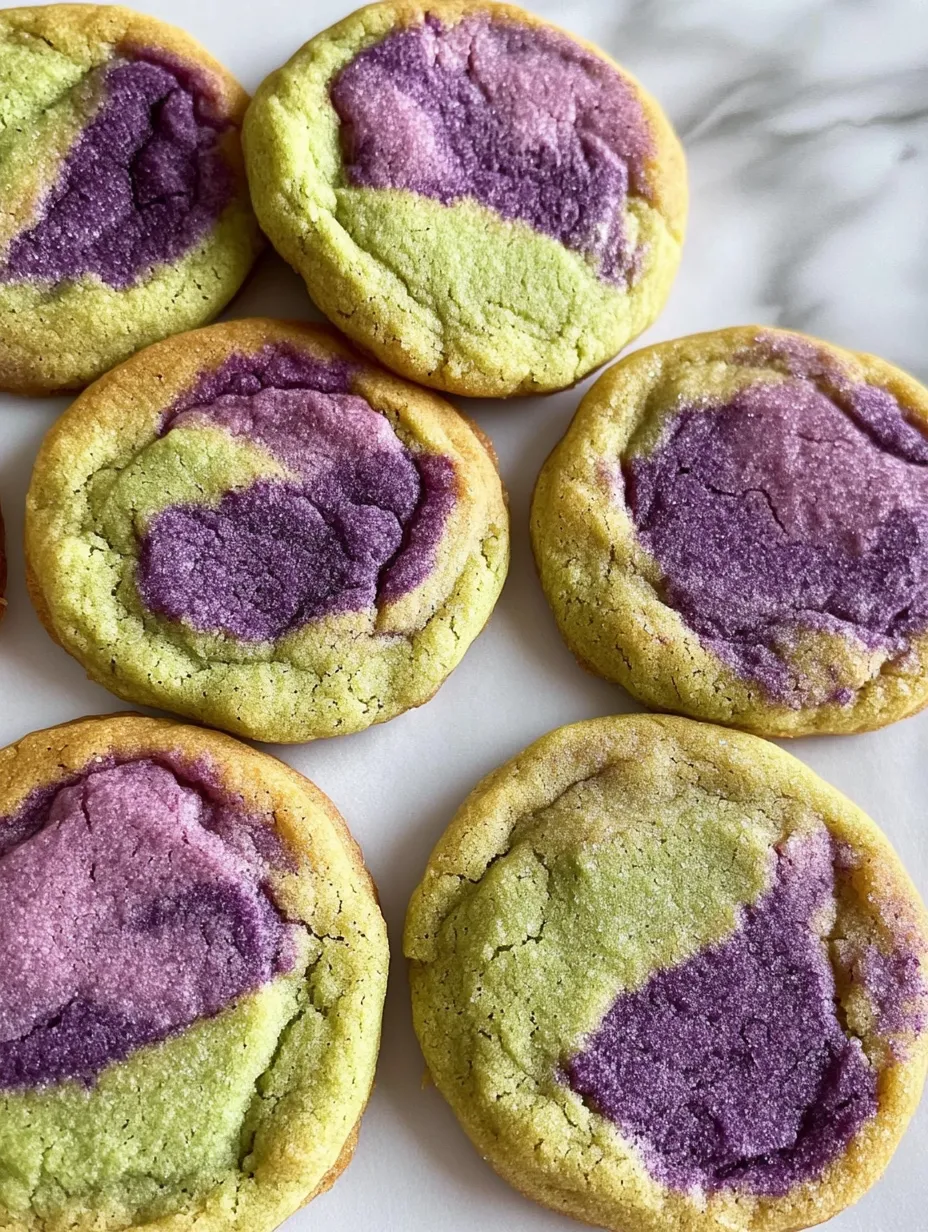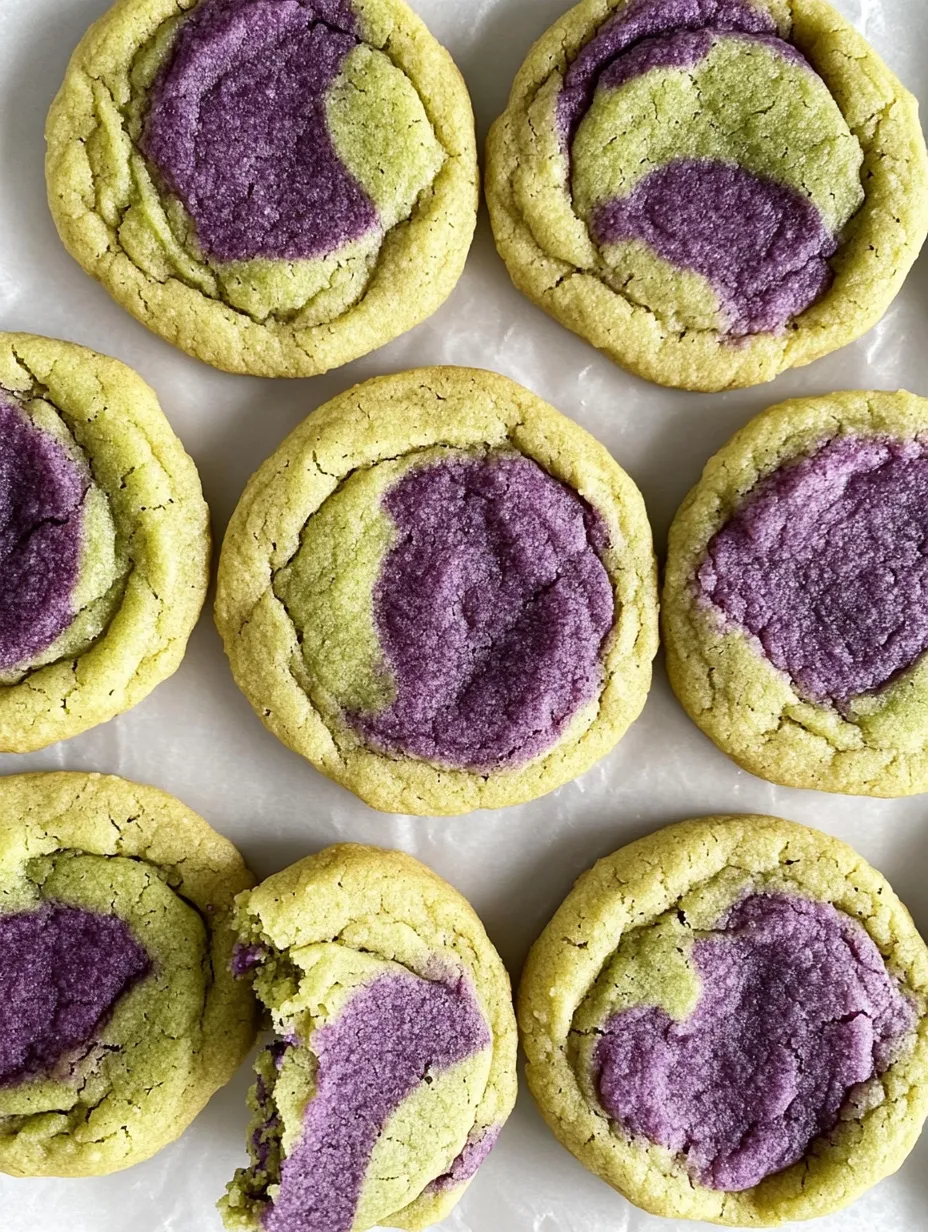 Pin it
Pin it
I stumbled upon this recipe while experimenting with my two favorite Asian flavors – earthy Japanese matcha and sweet Filipino ube. What started as culinary curiosity has become my signature dessert for gatherings where I want to introduce friends to something beyond the usual chocolate chip cookie. These vibrant two-toned treats combine the grassy, slightly bitter notes of matcha with the nutty, vanilla-adjacent sweetness of ube in a perfectly balanced cookie that's as beautiful as it is delicious. The marbled green and purple swirl never fails to draw compliments, and the soft, chewy texture keeps people reaching for seconds (and thirds!).
Last month I brought these to a potluck dinner, and my friend's seven-year-old daughter – notorious for only eating "white or brown foods" – took one bite and immediately asked for another. Her mom texted me later asking for the recipe, saying she'd never seen her daughter so excited about something with such vibrant colors. That's the magic of these cookies – they're just familiar enough in texture and sweetness to be approachable, but with flavors that feel special and new.
Vibrant Ingredients
- Matcha powder – This finely ground green tea creates both the beautiful color and distinctive flavor in half our dough. The quality matters significantly here – culinary grade works, but ceremonial grade matcha will give you a more vibrant green color and smoother flavor without bitterness. Store it in the refrigerator to maintain its color and flavor intensity.
- Ube extract – This purple yam flavoring is the secret to the gorgeous purple color and unique sweet, nutty flavor. Butterfly brand is my go-to because it's more concentrated in both color and flavor than other varieties. A little goes a long way, so the small bottle will last through many batches.
- Room temperature butter and eggs – This detail might seem fussy, but it makes a significant difference in achieving that perfect chewy texture. Cold ingredients don't incorporate properly, while overly warm ones can make the dough spread too much during baking.
- Extra egg yolk – This might seem like a small addition, but it's crucial for creating that soft, tender center that makes these cookies so irresistible. The additional fat from the yolk enriches the dough while contributing to the perfect chewy texture.
- Granulated sugar for rolling – This final touch adds a subtle sparkle and slight crunch to the exterior that contrasts beautifully with the soft interior. It's a simple step that elevates both the texture and appearance.
 Pin it
Pin it
Creating Cookie Magic
- Perfect creaming technique:
- When beating butter and sugar together, don't rush this step – those full three minutes of mixing incorporate air that helps create the ideal texture. You're looking for a mixture that's noticeably lighter in both color and texture than when you started.
- Dividing and flavoring:
- When splitting the dough, I find a kitchen scale invaluable for ensuring equal portions. If you don't have one, use a measuring cup to divide the dough as evenly as possible. Add the matcha to one portion first, mixing thoroughly before handling the ube portion to avoid cross-contamination of colors.
- Marbling mastery:
- The simplest method is to take one scoop of each flavor, press them together, and gently roll into a ball. For more distinctive swirls, lightly twist the two portions together before rolling. Avoid overmixing the colors or you'll lose the beautiful two-toned effect.
- Baking precision:
- The sweet spot is when the edges are just set but the centers still look slightly underbaked. They'll continue cooking on the hot baking sheet after removal from the oven, so err on the side of underbaking for that perfect chewy center.
- Cooling patience:
- Let these cookies cool on the baking sheet for the full five minutes – they're too soft to move immediately from the oven. This rest time allows them to set up enough to transfer to the cooling rack without breaking.
My first attempt at these was both a success and a learning experience. I tried to bake two sheets at once, which resulted in uneven baking and cookies that spread too much. I've also experimented with the ratio of matcha powder over several batches, finding that two teaspoons provides the perfect balance – enough to taste the earthy notes without overwhelming the sweet ube flavor or becoming bitter.
Serving Inspiration
Transform these Matcha Ube Cookies into an even more impressive dessert by serving them alongside vanilla ice cream for a simple but elegant dessert. For afternoon tea, arrange them on a tiered stand with other Asian-inspired treats like mochi or taiyaki. They make beautiful gifts packaged in clear cellophane bags tied with contrasting ribbon. For a dessert charcuterie board, break some cookies in half to showcase the marbled interior alongside other colorful treats.
Sweet Variations
Once you've mastered the basic recipe, try some creative variations. Add white chocolate chips to either or both dough portions for sweet bursts of creaminess. Roll the finished cookies in black sesame seeds instead of sugar for a nutty, slightly savory exterior. For holidays, use cookie cutters instead of rolling into balls – just chill the dough thoroughly first. During cherry blossom season, add a small dried cherry in the center of each cookie before baking for a seasonal touch.
Storage Secrets
These Matcha Ube Cookies maintain their soft, chewy texture for about three days when stored in an airtight container at room temperature. Place a piece of bread in the container to help maintain moisture – just replace it when it becomes stale. For longer storage, these freeze beautifully for up to three months – layer them with parchment paper in a freezer-safe container, then thaw at room temperature for about an hour before serving.
 Pin it
Pin it
I've made these Matcha Ube Cookies for countless gatherings over the years, from casual family desserts to Asian-inspired dinner parties. There's something about their unique flavor combination and striking appearance that makes them special without being intimidating. The fact that they incorporate two beloved Asian ingredients in a familiar Western cookie format makes them the perfect "gateway" dessert for introducing friends to new flavors. While they might look like they require advanced baking skills, the straightforward process makes them accessible to bakers of all levels – just be prepared for frequent recipe requests!
Frequently Asked Questions
- → What is ube and where can I find ube extract?
- Ube is a purple yam native to the Philippines, known for its sweet, nutty flavor that's often compared to vanilla with hints of pistachio. Ube extract can be found in Asian grocery stores, specialty baking shops, or online retailers. As mentioned in the recipe, Butterfly brand is recommended for its more concentrated flavor and vibrant color.
- → What type of matcha should I use for these cookies?
- For the best color and flavor, use culinary-grade matcha powder. Higher quality matcha will give you a more vibrant green color and stronger flavor. Ceremonial grade matcha is typically reserved for drinking as tea, but can be used if that's what you have available. Avoid using matcha with added sugar.
- → Why do my cookies look different in color than the photos?
- Color variation can happen due to the quality and brand of matcha powder and ube extract used. Higher quality matcha produces a more vibrant green, while different brands of ube extract can vary in purple intensity. The Butterfly brand ube extract is recommended for the most vibrant purple color.
- → Can I make these cookies ahead of time?
- Yes! You can prepare the dough up to 2 days in advance and store it in the refrigerator. Let it come to room temperature before scooping and baking. You can also freeze the formed, unbaked cookie dough balls for up to 3 months - just add 1-2 minutes to the baking time when baking from frozen.
- → Why do I need to bake these cookies one sheet at a time?
- Baking one sheet at a time in the center rack ensures even baking and the best texture. Multiple sheets can create uneven heat distribution in the oven, leading to inconsistently baked cookies. While it takes longer, the quality improvement is worth it!
- → Can I make these cookies without a stand mixer?
- Yes! While a stand mixer makes the process easier, you can use a hand mixer or even mix by hand with a wooden spoon. If mixing by hand, make sure your butter is very soft (but not melted) to make creaming easier, and be prepared for a good arm workout when incorporating all the ingredients.
